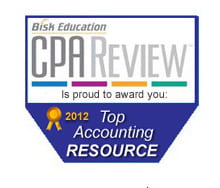Highlights of Berkshire Hathaway’s 2010 Letter To Shareholders
This morning Warren Buffett released Berkshire Hathaway’s 2010 Letter To Shareholders. Overall, the tone of this year’s letter is far more optimistic that of the last two years. Buffett expects the ongoing economic recovery to benefit Berkshire’s 78 businesses, especially those that suffered during the recent financial crisis and recession. In particular, he focussed on his February 2010 acquisition of Burlington Northern Santa Fe Railroad whose performance has exceeded Buffett’s expectations. He states: “owning this railroad will increase Berkshire’s “normal” earning power by nearly 40% pre-tax and by well over 30% after-tax”.
Other highlights from Buffett’s letter include:
(1) A discussion of how he calculates intrinsic value. (He considers book value to be an “understated proxy for intrinsic value”.) There are three components to this calculation. The first component is the market value of Berkshire’s investments in stocks, bonds, and cash equivalents ($158 billion at yearend). Berkshire’s insurance float (premiums paid to Berkshire that have not yet been paid out to cover claims) funds $66 billion of its investments. Berkshire’s second component of intrinsic value is earnings that come from sources other than investments and insurance underwriting. These earnings are delivered by Berkshire’s 68 non-insurance companies. The third, and more subjective component to intrinsic value, is the efficacy with which retained earnings will be deployed in the future.
(2) Buffett is seeking more major acquisitions. “We’re prepared. Our elephant gun has been reloaded, and my trigger finger is itchy”. ($38 billion in cash)
(3) GEICO is now the third largest auto insurer in the U.S. with a market share of 8.8%. When Tony Nicely became CEO in 1993, its market share was only 2.0%.
(4) Dividends from Berkshire’s common stock holdings will almost ceratinly increase in 2011. The largest gain is likely to come from Wells Fargo. The Federal Reserve has frozen dividend levels at major banks during the last two years. “Wells Fargo, though consistently prospering throughout the worst of the recession and currently enjoying enormous financial strength and earning power, has therefore been forced to maintain an artificially low payout”…”At some point, probably soon, the Fed’s restrictions will cease. Wells fargo can then reinstate the rational dividend policy that its owners deserve.” Other companies held by Berkshire that are likely to increase dividedns this year include Coca-Cola.
(5) Lou Simpson retired at yearend at age 74 — “an age Charlie and I regard as appropriate for trainees at Berkshire”. (Buffett is 80 years old, and Munger is 87.)
(6) With respect to the recent hiring of Todd Combs as an investment manager, Buffett was looking for someone with a good understanding and sensitivity to risk and has the “ability to anticipate the effects of economic scenarios not previously observed”.
(7) A brief discussion of some recent “terrible behavior” by general partners of hedge funds who received huge payouts on the upside and who then, when bad results occurred, have walked away rich, with the limited partners losing back their earlier gains. “Sometimes these same general partners thereafter quickly started another fund so that they could immediately participate in future profits without having to overcome their past losses. Investors who put money with such managers should be labeled patsies, not partners.”
(8) The reporting of net income at Berkshire is almost meaningless because that number can vary greatly depending upon when Buffett and Munger decide to sell some of their investments and realize gains or losses.
(9) Buffett and Munger believe that Black-Scholes produces “wildly inappropriate values when applied to long dated options” such as the “equity puts” that Berkshire has sold.
(10) 48 universities (selected from 200 applicants) will be sending students to Omaha this school year for a day with Buffett. (The University of Maryland is one of the schools that has been selected.)
Buffett reported Berkshire’s largest common stock holdings (with a market value of over $1 billion) as of yearend as follows (in descending order by value):
(1) Coca-Cola ($13.2 billion) — 21.4% of common stock holdings
(2) Wells Fargo ($11.1 billion) — 18.1%
(3) American Express ($6.5 billion)– 10.6%
(4) Procter $ Gamble ($4.7 billion) — 7.6%
(5) Kraft Foods ($3.1 billion) — 5.0%
(6) Munich Re ($2.9 billion) — 4.8%
(7) Johnson & Johnson ($2.8 billion) — 4.5%
(8) U.S. Bancorp ($2.1 billion) — 3.4%
(9) Wal-Mart ($2.1 billion) — 3.4%
(10) ConocoPhillips ($2.0 billion) — 3.2%
(11) POSCO ($1.7 billion) — 2.8%
(12) Sanofi-Aventis ($1.7 billion)– 2.7%
(13) Tesco plc ($1.6 billion) — 2.6%
(14) BYD ($1.2 billion) — 1.9%
Others ($5.0 billion) — 8.1%
Total ($61.5 billion) — 100%
Buffett’s entire Letter to Shareholders is available at:





Was disappointed that there was so little discussing BYD with all of the recent bad publicity they have been getting. Doesn’t seem to fit the usual holding and should warrant more discussion.
Warren Buffett discussed BYD in response to a viewer question on CNBC on March 2. (See my “Highlights” of that interview.)
Thank you for taking the time to put that together. Very good read. Still very limited information on BYD but his comments do highlight that the automotive side of the business is not what they are interested in. Again, thank you.